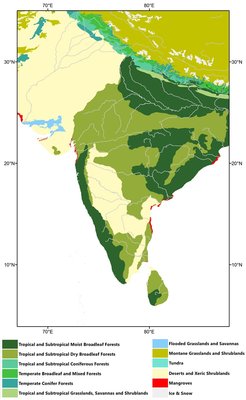Review of Pleistocene climates and environments across South Asia documents different tempos of human technological innovation
The study, “A transect of environmental variability across South Asia and its influence on Late Pleistocene human innovation and occupation,” examines the hypothesis that climate change has often been a driver of biological evolution and cultural innovation in humans.
Climate change has often been highlighted as an important driver of biological evolution and cultural innovation in our species. It is often seen as stimulating human behavioural plasticity and the development of buffering mechanisms, for example in the form of more efficient technology and subsistence strategies. However, such hypotheses have been rarely studied in detail in South Asia, despite improving Late Pleistocene palaeoenvironmental records in this region and its important position in the story of human dispersals beyond Africa at this time.

An article by Patrick Roberts, Jimbob Blinkhorn, and Michael Petraglia published the Journal of Quaternary Science is the first to review evidence for technological and behavioural innovation across three very different environmental regions of South Asia, including the arid Thar Desert in the northwest, the Jurreru River Valley in southeast India, and the lowland evergreen rainforests of Sri Lanka. This environmental ecotone was differentially affected by climate change in the Late Pleistocene, and particularly during the Last Glacial Maximum. Moreover, the archaeological records from each region have a distinct nature and tempo of cultural change, likely reflecting, to some extent, changing local ecologies. Overall, however, the varied environments of South Asia made it an attractive region for the persistence of our species, and its gradual innovation, during the Late Pleistocene.
